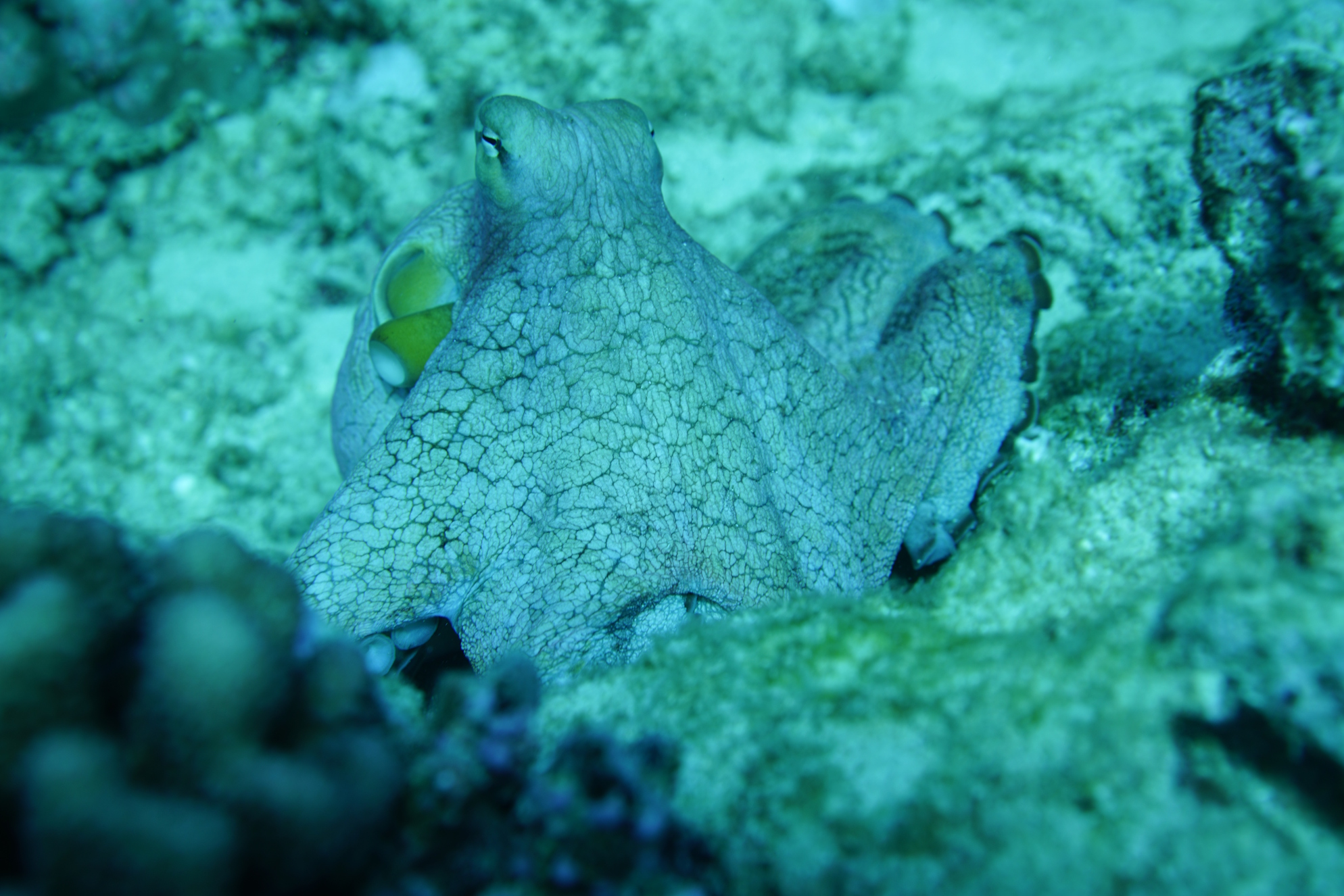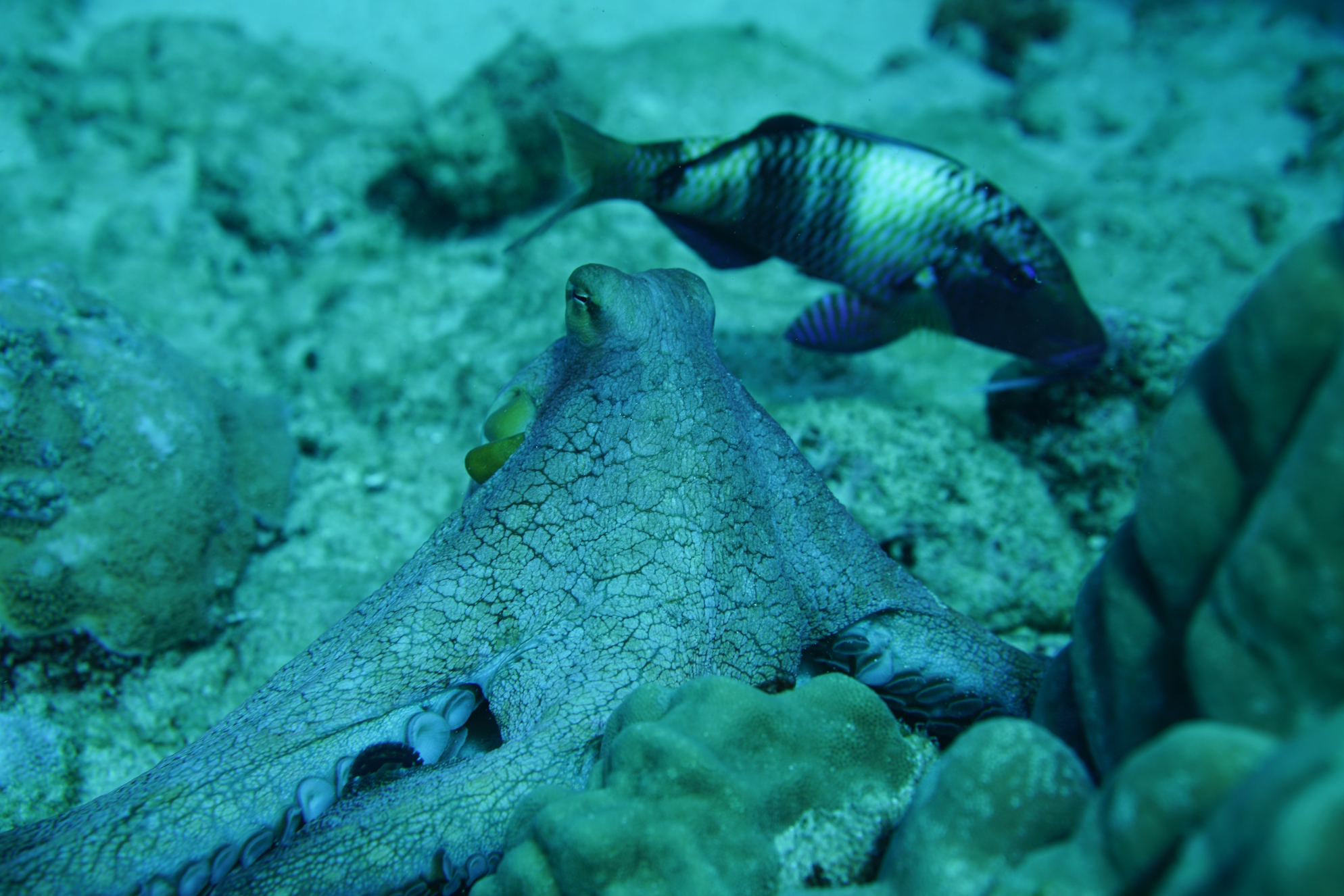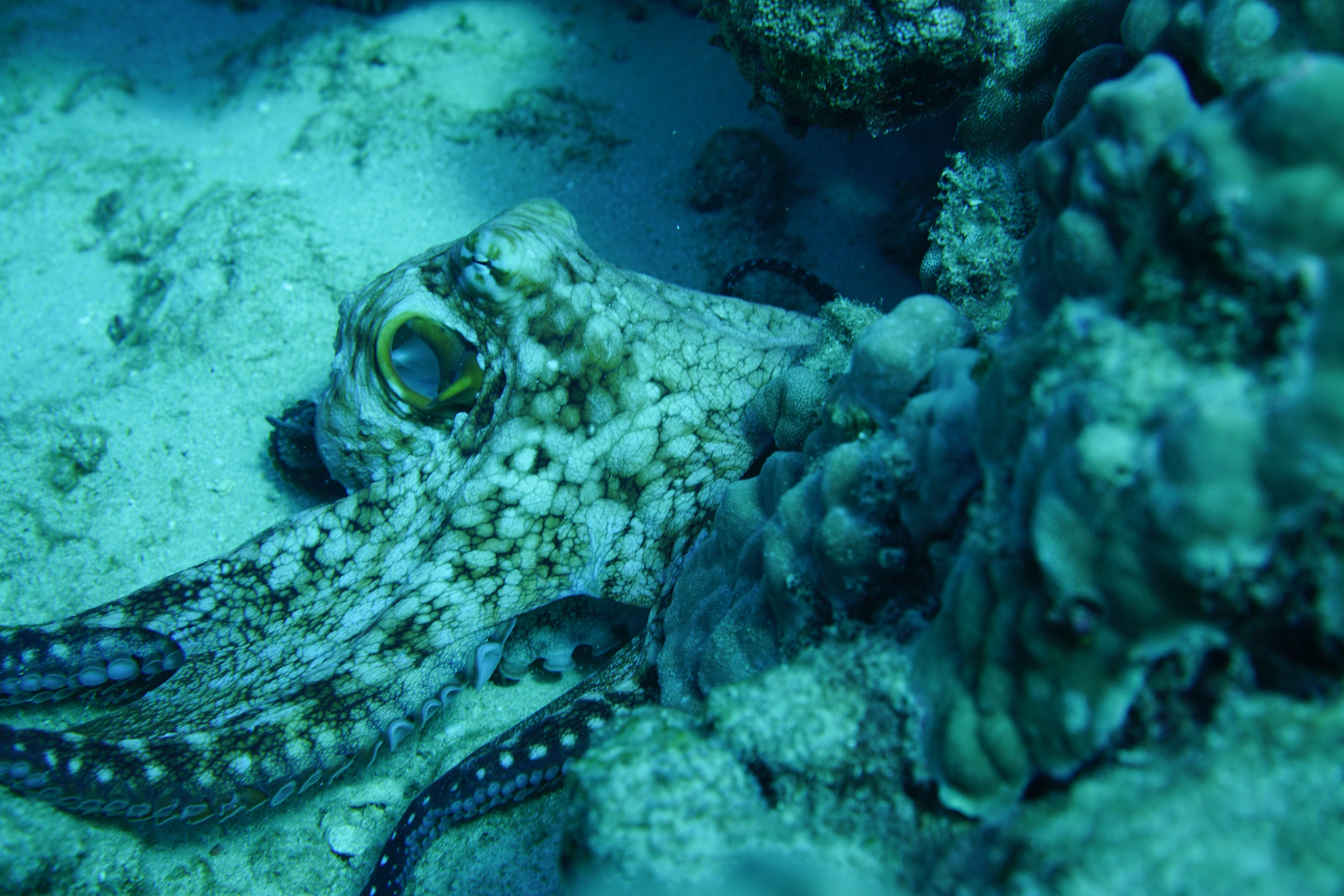The Hawaii day octopus, also known as the Hawaiian day octopus or Octopus cyanea, is a fascinating marine creature found in the warm waters surrounding the Hawaiian Islands. It belongs to the cephalopod family and is renowned for its unique appearance and remarkable behavior. The Hawaii day octopus possesses an elongated body with a soft mantle and eight flexible arms lined with suckers, allowing it to navigate its aquatic environment with agility and grace.
One of the distinctive features of the Hawaii day octopus is its ability to change color and texture, enabling it to camouflage itself effectively. This incredible camouflage mechanism allows the octopus to blend seamlessly with its surroundings, providing protection from predators and aiding in hunting. The octopus can alter its skin pigments to match the color and pattern of nearby rocks, corals, or sand, rendering it almost invisible to unsuspecting prey or threats.
In addition to its remarkable camouflage abilities, the Hawaii day octopus is known for its intelligence and problem-solving skills. It exhibits a high level of curiosity, often exploring its environment and interacting with objects in its surroundings. Researchers have conducted experiments that demonstrate the octopus’s ability to learn and remember, making it an intriguing subject for study.
The Hawaii day octopus is a carnivorous creature, primarily feeding on small fish, crabs, and shrimp. It uses its sharp beak, located at the center of its arms, to capture and consume its prey. Despite its name, the Hawaii day octopus is not strictly diurnal but can be observed hunting during the day as well as at night, making it an active and opportunistic predator.
Overall, the Hawaii day octopus is a captivating and intelligent creature found in the vibrant waters of Hawaii. Its adaptive camouflage, problem-solving abilities, and predatory nature contribute to its status as a fascinating marine species. Observing and studying these remarkable creatures can provide valuable insights into the intricate workings of the underwater world and the marvels of nature’s diversity.





